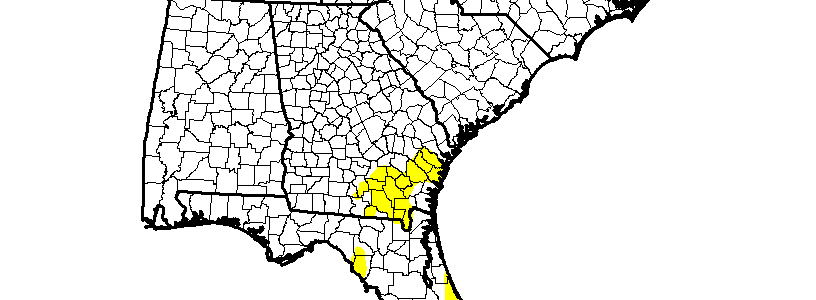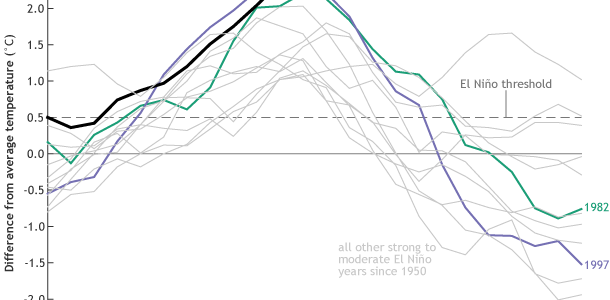El Nino and La Nina
-

ENSO, or the El Niñ0 Southern Oscillation, is the term for both halves of the oscillation in the eastern Pacific Ocean known as El Niño (for unusually warm water) and La Niña (unusually cold water). Since we are near the peak of a strong El Niñ0 but are expected to decline and perhaps swing to a…
-

AL.com posted a story yesterday with the title above looking ahead to the future as El Niño reaches its peak intensity and starts to decline. What happens after a strong El Niño starts to fade? Keep in mind that it will take months for the mass of unusually warm water in the Eastern Pacific Ocean…
-

The heavy rains that fell in southern Florida this past week wiped out the last remaining pocket of moderate drought in the Southeast as well as put a dent in the areas of abnormally dry conditions. Hard to believe that just three months ago more than half the region was abnormally dry or worse, and…
-

The media has been proclaiming the current very strong El Niño to be potentially record-setting, with the sea surface temperature values tied with the 1997-98 very strong event. But as Emily Becker shows in the latest NOAA El Niño blog, it’s not quite that simple. Her blog post discusses the different methods for calculating the…
-

El Niño rains have affected production areas for strawberries in both California and Florida in recent weeks, and the continued rainy conditions predicted for the next few months are expected to affect the availability of strawberries for the next few months. You can read the article in The Packer at https://www.thepacker.com/news/strawberry-prices-likely-remain-high-el-nino-looms.
-

Dr. Jeff Masters reported on his Weather Underground blog that the current El Niño set an all-time record for a weekly value last week. You can read the blog post here. Among the impacts that are being seen around the world are drought in Africa and other locations, floods in South America, and a strong…
-

I read an interesting article in Bloomberg Businessweek today about the impacts of El Niño on the worldwide price of gold. According to the article, one of the biggest groups of buyers of gold is Indian farmers, who use gold as an investment and as a dowry when their daughters get married. This year the strong…